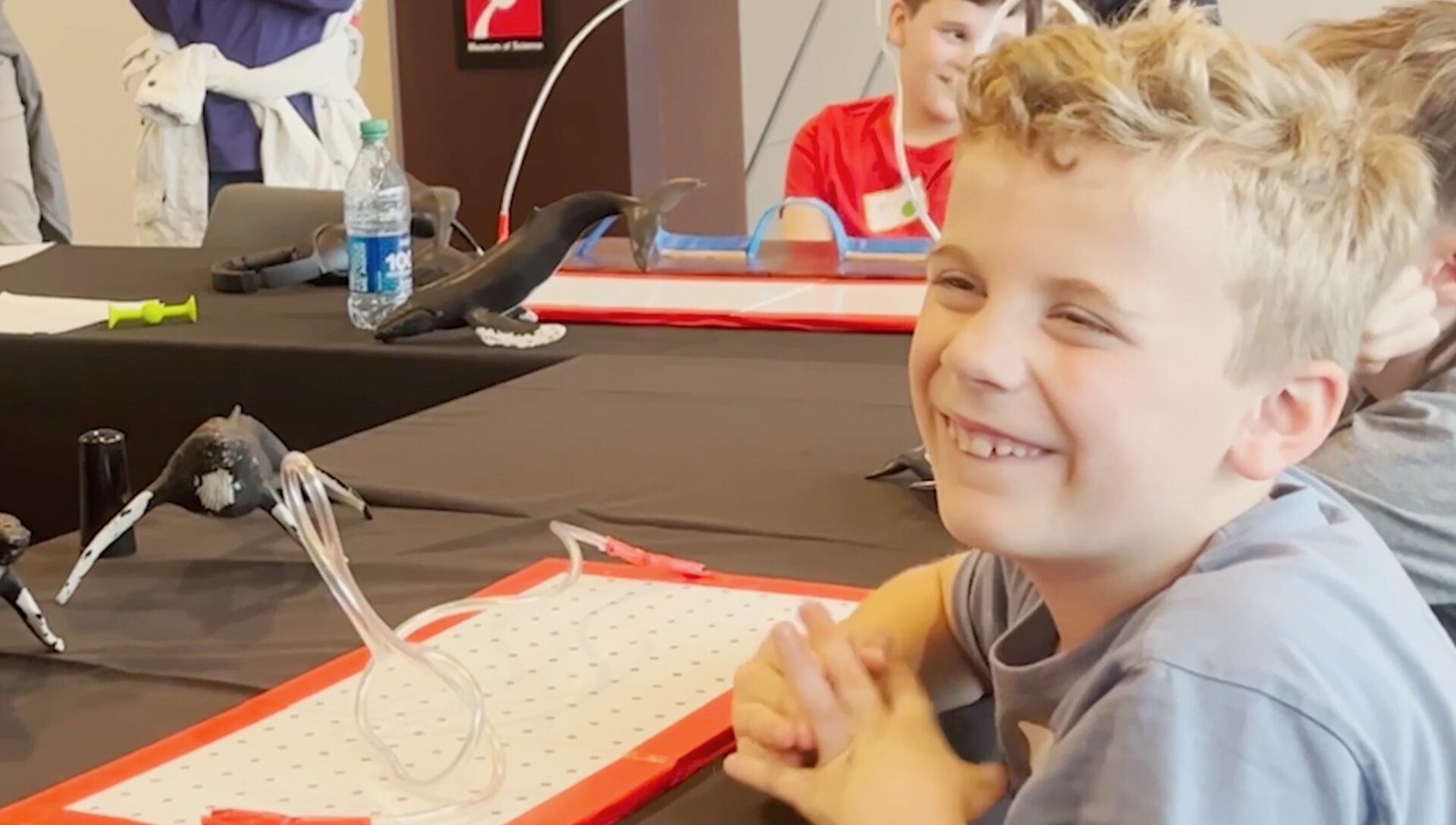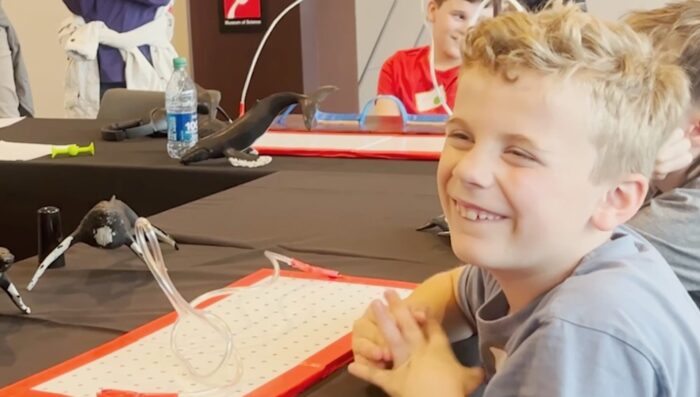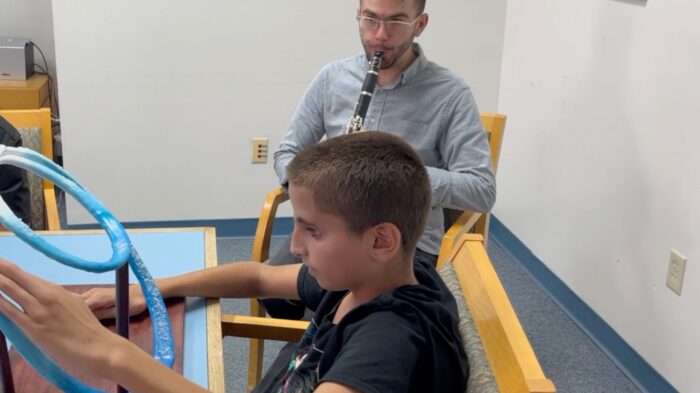
Whales in Motion in Stellwagen Bank National Marine Sanctuary

Written by: Terry Wolkowicz, Education Director and Dr. David MacKenzie, Music Director, Sound Explorations
In partnership with Dr. David Wiley, National Oceanic and Atmospheric Administration (NOAA) Marine Ecologist and Research Coordinator at Stellwagen Bank National Marine Sanctuary, David MacKenzie and Terry Wolkowicz, two music educators who co-founded the educational nonprofit Sound Explorations, were asked to find a way to show the relationships between key species in Stellwagen Bank National Marine Sanctuary using music. Originally meant for the general public, this project and those that followed revealed a unique and effective way to share marine science and conservation concepts with the blind and low vision community, as well. The culmination of these efforts is Whales in Motion.
Whales in Motion combines tactile sculpture models and live musical performances to enable blind and low vision children and adults to experience how whales move and forage for food. As the participants move their hand over the sculpture, a musician performs music that mimics the exact speed of their hand, and the contours and motions they feel. The sculptures were created by Sound Explorations’ artist, Emilie Grossman, who included essential features which reflect fluke strokes, physical contact with the ocean floor, body orientation, swimming direction, and lob-tail strikes. These sculptures were crafted using Humpback and North Atlantic Right Whale tag-data collected by NOAA scientists.
About 284 million people in the world have low vision, and 39 million are blind. Yet, the scientific community mainly shares the results of research through text and imagery. Our challenge was to find a new way to communicate important scientific findings that includes people for whom those forms of communication offer limited opportunities.
Instead of relying on imagery and written text, our program allows participants to experience the movement of a whale through touch, movement, and sound. By intentionally synchronizing these three modes of perception, we create a unified representation of a whale’s diving and foraging behavior. This approach offers participants a new way to understand these behaviors, which may have been previously unavailable to them. Additionally, these experiences can spark active and engaging conversations about how these behaviors put whales at risk when they interact with ocean vessel traffic and vertical fishing gear.
“Being blind, myself, I depend a lot on tactile models, of which now there are many more and it’s much easier to make three dimensional models of anything now. Showing the students the whales and their behavior in this tactile way with the music reinforcement, I think is brilliant…The more proficient they can become in their computer skills and their access to technology, the better. They will solve problems. Any challenges they come up against as a blind or low vision student, or graduate student, or professional, they’ll be able to figure out. That’s how I got where I am.”- Dr. Amy Bower, Senior Scientist at Wood’s Hole Oceanographic Institute
“Music really touches my soul, so I just instinctively knew I wanted to coordinate my movements with the music as much as possible. Even though I used to have more vision than I do now, I was never able to see things in detail and wasn’t great at deciphering pictures. So I really didn’t know what a whale looked like other than that it was big. I love to travel and rely on a lot of verbal description. But that pales compared to being able to learn through touch and sound. The whale sculptures and the tiny figures were genius!” said one participant.
Whales in Motion has been presented with remarkable success at major science centers, museums, schools and associations for the blind, and adult sight loss support groups across the Eastern seaboard. Pete DeCola, Superintendent of Stellwagen Bank National Marine Sanctuary, said, “Bringing the sanctuary to the public is challenging enough as it is, and it’s a very visual experience, so bringing it to visually impaired students is even more rewarding, because the smiles on the kids’ faces are just so worth it.”
Ben Haskell, Deputy Superintendent, Stellwagen Bank National Marine Sanctuary said, “I love the thought that these kids may have never actually been introduced to what a whale is or how it feels and now they have this intimate experience, this tactile experience, auditory experience, and they know so much more.”
Responses to Whales in Motion social media posts indicate broad public support for the program as well, with some posts receiving over 10 million views. The Sound Explorations team aims to collaborate with more marine scientists to design new sculptures, expanding the range of whale species and behaviors represented. This will enable Whales in Motion to engage additional blind and low vision communities across the country with even greater effectiveness.

